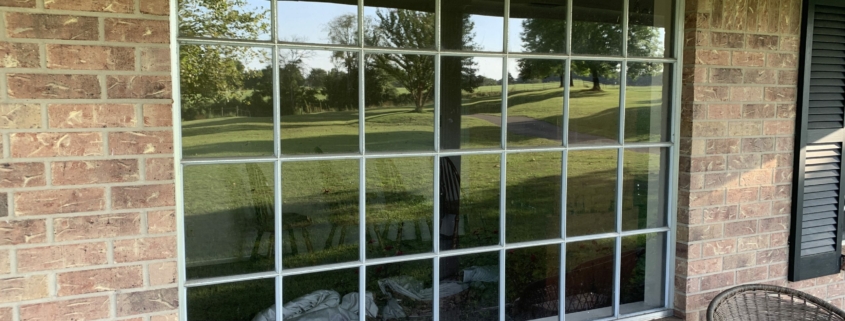Window Parts Explained
Windows are an important feature in any building, providing natural light, ventilation, and views to the outside world. But have you ever wondered what exactly makes up a window? In this article, we cover the various window parts. Understanding the components of a window, which can help you make informed decisions when it comes to repairing, maintaining, or even selecting new windows for your home or office.
Understanding the Basics of Window Anatomy
Before we delve into the specific window parts, it is essential to have a basic understanding of window anatomy. A window consists of external and internal components, each serving a specific purpose. By comprehending the interplay between these elements, you will gain insight into how a window functions.
Let’s start by examining the external components of a window. The first component is the frame, which provides structural support and holds the window in place. Frames can be made of various materials, including wood, vinyl, aluminum, or fiberglass, each with advantages and disadvantages.
Next, we have the sash, the movable part of the window. The sash allows for ventilation and can be opened or closed, depending on the window type. Different window styles have different sash configurations, such as single-hung windows with a fixed upper sash and a movable lower sash or casement windows with a hinged sash that swings open like a door.
Now, let’s turn our attention to the internal components of a window. One crucial element is the glazing, which refers to the glass panels that make up the window. Glazing plays a vital role in insulation, soundproofing, and UV protection. Various types of glazing are available, such as single-pane, double-pane, or even triple-pane windows, each offering different levels of energy efficiency.
In addition to the glazing, windows often feature weatherstripping, which helps to seal any gaps between the sash and the frame. This weatherstripping prevents drafts, reduces energy loss, and enhances the overall insulation of the window. Weatherstripping materials can include rubber, foam, or magnetic strips, depending on the window design.
The Importance of Knowing Window Parts
Knowing the various parts of a window is crucial for homeowners and construction and architecture professionals. It allows for effective communication when discussing window repairs or replacements and ensures the correct terminology is used. Furthermore, understanding window anatomy empowers homeowners to identify issues, assess potential energy efficiency improvements, and make informed decisions about window upgrades.
For example, if a homeowner notices a draft coming from their window, knowing the different components can help them pinpoint the source of the problem. It could be a worn-out weather stripping that needs to be replaced or a faulty sash that requires repair. By understanding the anatomy of a window, homeowners can communicate these issues more effectively to professionals, leading to quicker and more accurate solutions.
Professionals in the construction and architecture industry also benefit from a thorough understanding of window parts. Using the correct terminology builds trust and credibility when discussing projects with clients. It shows that you have the expertise to handle their window-related needs and can provide accurate recommendations for repairs or replacements.
Common Types of Windows
Before we dive into the specific parts of a window, it is useful to discuss the different types of windows briefly. Windows can be categorized into several styles: casement, double-hung, sliding, awning, and fixed windows. Each style has unique features, design, and functionality, which we will explore in more detail in future articles.
- Casement windows, for example, are hinged on one side and open outward like a door. They provide excellent ventilation and are often used in areas with desired unobstructed views, such as living rooms or bedrooms. On the other hand, double-hung windows have two sashes that slide vertically, allowing for both top and bottom ventilation. They are a popular choice for traditional and historic homes.
- Sliding windows feature one or more sashes that slide horizontally, making them easy to operate and ideal for spaces with limited vertical clearance. Awning windows are hinged at the top and open outward, creating an awning-like effect. They are commonly used in bathrooms or basements, where privacy and ventilation are essential.
- Lastly, fixed windows are non-operable and do not open or close. They often combine with other window styles to provide additional natural light and unobstructed views. Fixed windows are common in large architectural designs, such as picture or clerestory windows.
The External Parts of a Window
Now that we have covered the basics let’s zoom in on the external parts of a window. These components are integral to a window’s structural integrity, weatherproofing, and overall aesthetics.
The Window Frame
At the heart of a window lies the frame. Its primary function is to support the entire window structure and secure it within the opening in the wall. Window frames are typically made of wood, vinyl, aluminum, or steel. Each material offers unique benefits and varying durability, insulation, and maintenance requirements.
The Window Sash
Another crucial external component is the window sash. The sash is the movable part of the window that holds the glass panes. In double-hung windows, for example, the sash allows the window to be opened from the top or the bottom, providing ventilation options. The sash is also responsible for securing the glass panes within the frame.
The Window Pane
Speaking of glass panes, they are essential for allowing light into the room and providing a view of the outside. The window pane is a transparent component that fits into the sash, typically held in place with glazing putty, clips, or other fasteners. Glass panes come in various types, including single-pane, double-pane, and even triple-pane for improved energy efficiency.
Perimeter
Now that we have explored a window’s external parts let’s shift our focus to the internal components.
The Window Jamb
The window jamb refers to the vertical members that form the sides of the window frame. These structural elements support the sash, helping position it when the window is open or closed. Properly installed and maintained window jambs prevent air and water leakage, ensure energy efficiency, and enhance the window’s security.
The Window Sill
The window sill or ledge is the horizontal component at the window frame’s bottom. It provides a surface for items to be placed on and helps prevent water from entering the building. Depending on the desired aesthetics and functionality, sills can be made of various materials, including wood, stone, or metal.
The Window Head
Completing the framing of a window is the window head, which is the horizontal member positioned at the top of the frame. Together with the jambs and sill, the window head forms a rigid structure that supports the weight of the window and any external elements, such as protective overhangs, that may be present.
Hardware
Lastly, we must not forget the hardware that enables the operation and security of a window.
The Window Lock
Window locks are vital for ensuring the safety and security of your home or office. They are mechanisms that allow the window to be securely closed and locked. Locks come in various types, including casement fasteners, sash locks, and sliding window locks, each suited to different window styles and preferences.
The Window Handle
Window handles, or cranks or operators, are used to open and close casement windows. These handles are typically located at the base of the frame and are used to operate the mechanism that opens and closes the window sash.
The Window Hinges
Hinges are critical components for windows that open on a hinge, such as casement or awning windows. They enable the smooth operation and controlled movement of the sash as it swings open or closed. Hinges can be made from various materials, including stainless steel, brass, or bronze, depending on durability, aesthetics, and resistance to corrosion.
In conclusion, understanding the various parts of a window is essential for anyone involved in building construction, maintenance, or renovation. From the external components, such as the frame, sash, and pane, to the internal elements, like the jamb, sill, and head, each part plays a crucial role in the window’s function and performance. The hardware, including locks, handles, and hinges, also ensures the window’s usability and security. By familiarizing yourself with these window parts, you will be better equipped to make informed decisions regarding repairing, maintaining, or selecting new windows for your space.
Window Depot USA of Tyler, TX, combines premium grade replacement window products with factory-direct pricing, a Transferable Lifetime Limited Warranty, and professional, courteous installation to offer the very best value in the industry today! Call us at (903) 752-0449 for a free, no-obligation quote, and find out firsthand what sets Window Depot of Tyler, TX, apart from the rest of the crowd. We’d be honored by the opportunity to earn your business!
Our service area includes the following towns: Tyler, Whitehouse, Bullard, Lindale, Chandler, Canton, Mineola, Longview, Kilgore, Henderson, Gilmer, Gladewater, Marshall, Hallsville, and Palestine.









